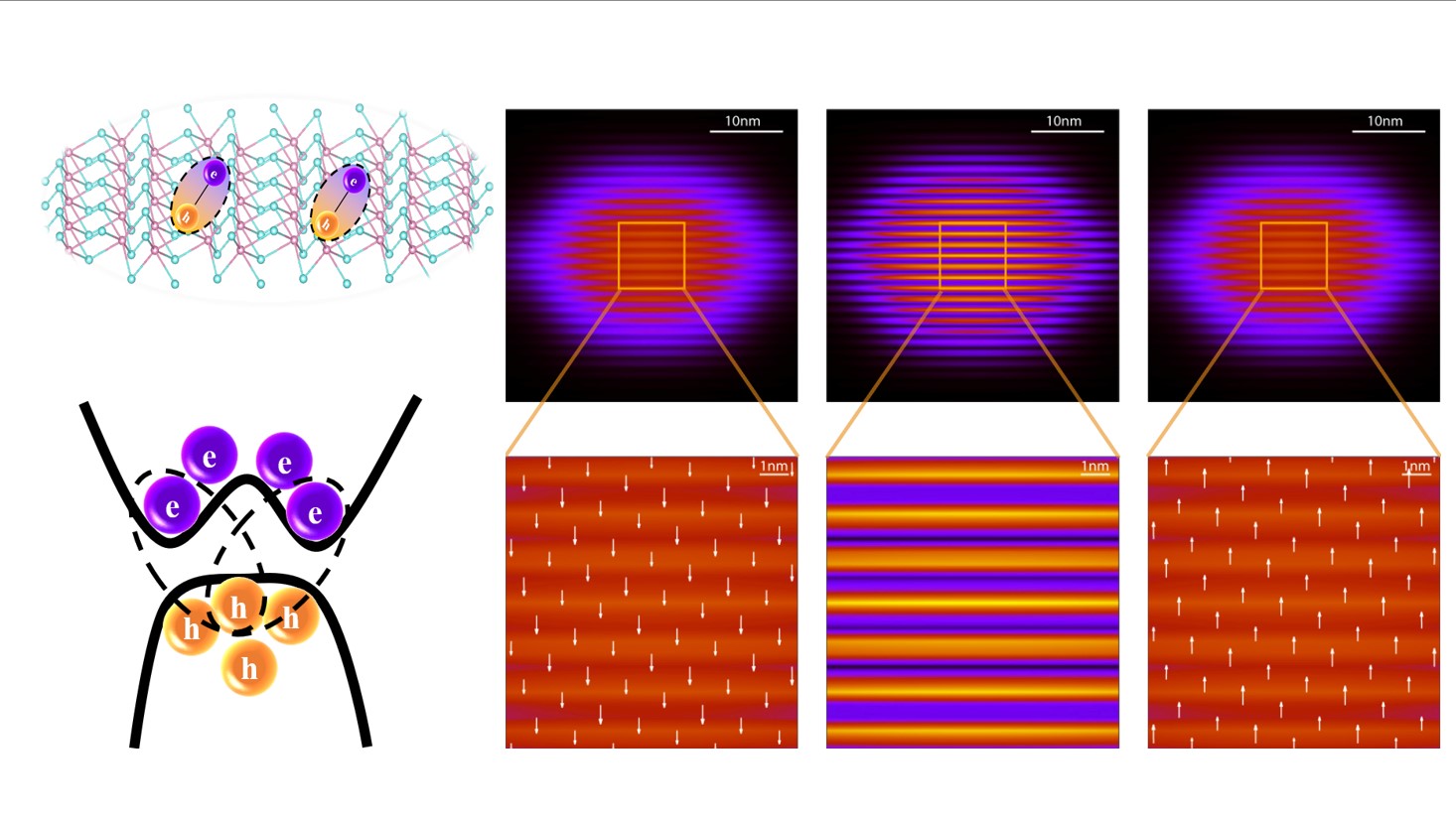Dr. Chen Yingda from the School of Materials Science and Engineering, in collaboration with the Institute of Semiconductors of Chinese Academy of Sciences(CAS) and Zhejiang University, have recently predicted a novel quantum state: the topological exciton density wave. The work, titled “Topological Exciton Density Wave in Monolayer WSe2,” was published in Physical Review Letters [Phys. Rev. Lett. 134, 066602 (2025)].
Physical Review Letters, a prestigious physics journal by the American Physical Society (APS), has published numerous Nobel Prize-winning works. Dr. Dong Shan (CAS) and Dr. Chen Yingda (TU) are co-first authors. Academician Chang Kai (Zhejiang University) and Researcher Lou Wenkai (CAS) are co-corresponding authors. TU is listed after CAS and Zhejiang University as a contributing institution.

Topological exciton insulator ground state (left) and topological exciton density wave (right)
Based on the first-principles calculations coupled with the Bethe-Salpeter equation, the topological exciton density wave is investigated in two-dimensional monolayer WSe2. The team found that the topological excitonic insulator phase can exist in monolayer WSe2, and it is robust against in-plane strain. In this system, the energy minimum of exciton bands is shifted to a finite in-plane momentum, forming a Fulde-Ferrell-Larkin-Ovchinnikov-like state. Using the Gross-Pitaevskii equations, stripe-patterned exciton density waves with a nonzero velocity emerge in monolayer WSe2. The findings of the research paved a new way for exploring the interplay between electron correlation and nontrivial topology.
Link to the paper: https://doi.org/10.1103/PhysRevLett.134.066602